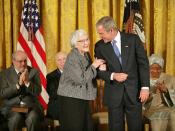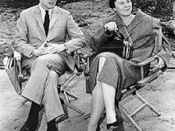To Kill a Mockingbird Written Task
In the novel, "To Kill a Mockingbird," Harper Lee strongly criticizes prejudice of any kind, positioning readers to view prejudice through her invited reading, as well as a number of characters and discourses presented in the novel. Harper Lee positions readers to understand "To Kill a Mockingbird", as a story which highlights the serious issues of prejudice, discrimination and injustice which occurred during the cultural context of the 1930's, in Alabama and the Deep South of North America. The narrator of the text, Scout Finch, demonstrates her maturation she developed throughout the novel, an example of this is when Scout states, "Well, it'd be sort of like shootin' a mockingbird, wouldn't it?" (pg 304) Due to the privileging of this character, readers are positioned to respond to the issues of prejudice through the eyes of Scout. To answer this question the following aspects of the text need to be considered; discourses, gaps and silences, foregrounding and privileging and finally invited, resistant and alternative readings.
Discourses are cultural and social practices through which individuals and groups use language and establish their identities within their society. In "To Kill a Mocking Bird" Harper Lee uses 5 forms of discourses; race, gender, religious, family and class. Lee effectively shows how the racist views of Maycomb are socially acceptable for that time yet Scout constantly questions these perspectives and is represented as a more mature person compared to the bigotry of the townspeople. This quote from Atticus Finch, Scout's father, shows how he shares the same views as scout, "As you grow older, you'll see white men cheat black men every day of your life, but let me tell you something and don't you forget it, whenever a white man does that to a black...


